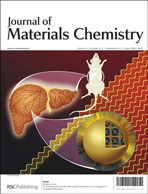A facile redox reaction between KMnO4 and MnSO4 was carried out to investigate the dielectric response and microwave absorbing properties of Ni/Co-doped MnO2. The samples were characterized by X-ray powder diffraction (XRD), X-ray fluorescence spectrometry (XRF), scanning electron microscopy (SEM), and vector network analysis. The analysis results revealed that the powders were α-MnO2 with one-dimensional nanostructure. The doping of Ni/Co had a certain effect on the dielectric properties: the relative complex permittivity showed a more distinct dielectric response characteristic, and the imaginary part exhibited a great enhancement of 2–18 GHz, which resulted in controllable wave-absorbing properties. The microwave absorbing bandwidth (RL < −10 dB) for Co-doped MnO2 was located at 10.96–16.13 GHz with a thickness of 2 mm. Furthermore, the Debye equation was introduced to explain the novel microwave dielectric response of doped MnO2. Some other properties derived from dielectric performances were also investigated, such as dielectric loss tangent and dielectric conductivity. In particular, first-principles calculations based on density functional theory (DFT) were used to uncover the relationship of electronic structure and dielectric properties on the microscopic scale.

You have access to this article
 Please wait while we load your content...
Something went wrong. Try again?
Please wait while we load your content...
Something went wrong. Try again?


 Please wait while we load your content...
Please wait while we load your content...